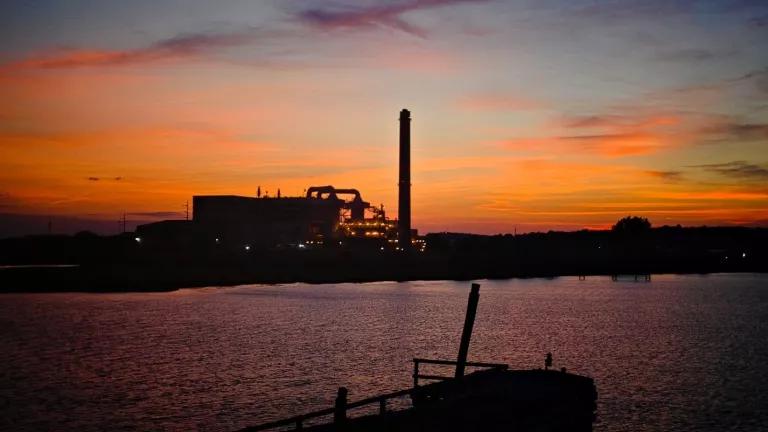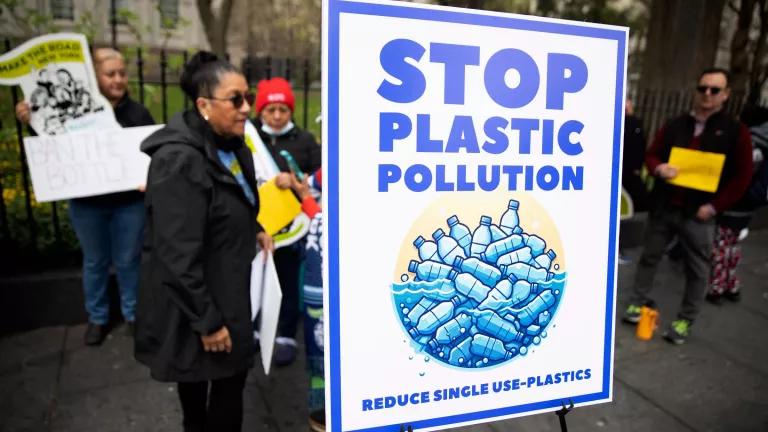Burned: Why Waste Incineration Is Harmful
As legislation to protect the environment moves through Congress, polluting industries are using greenwashing terms like "waste to energy" and "chemical recycling" to build support for a dirty and unsafe technology: incineration.

Wheelabrator Saugus incineration plant in Saugus, MA
Since the Biden administration took office, Congress is considering bills to fund infrastructure, tackle plastic pollution, and combat climate change. While legislative action is welcome, Congress must avoid ideas disguised as environmental advances that actually threaten public health and the environment. One example is the bundle of troubling technologies that all involve waste incineration, such as “waste-to-energy" or many forms of “chemical recycling” (processes frequently used to convert plastics into fuel that is then burned). These technologies are touted as being environmentally beneficial by various industries, but waste incineration—even if it’s masquerading as “chemical recycling”—is a false solution that Congress should firmly reject.
Regardless of what is being burned (mixed municipal solid waste, plastic, outputs from “chemical recycling”), waste incineration creates and/or releases harmful chemicals and pollutants, including:
- Air pollutants such as particulate matter, which cause lung and heart diseases
- Heavy metals such as lead and mercury, which cause neurological diseases
- Toxic chemicals, such as PFAS and dioxins, which cause cancer and other health problems
These chemicals and pollutants enter the air, water and food supply near incinerators and get into people’s bodies when they breathe, drink, and eat contaminants.
Studies find that proximity to waste incineration may increase risks of cancers, birth defects, and other adverse health impacts. Often, low-income and communities of color bear the brunt of this toxic burden, with 80% of U.S. municipal solid waste incinerators situated in communities where more than 25% of people identify as “minority,” living below the federal poverty rate, or both.
And, the impacts are far-reaching as well. A number of the emitted substances from waste incineration are considered the “worst of the worst”—persistent organic pollutants that do not break down, move across the globe, and build up in people and wildlife, harming their health. For example, toxics like PFAS, dioxins, and mercury compounds are found in the environment, people, and marine mammals in the Arctic, far from any industrial sources. One study found that past municipal waste incineration in the U.S. has been responsible for 70-80% of dioxins found in the far North.
“Chemical recycling” is not recycling
“Conversion technologies,” “chemical conversion,” and most forms of “advanced recycling” and “chemical recycling” processes are not actual methods of recycling. What we are actually talking about is burning: These processes inappropriately and ineffectively use mixed municipal solid waste as feedstock for incinerators or deferred incinerators (e.g. pyrolysis and other "conversion technologies” which create synthetic gas which is later burned). While some forms of chemical recycling may actually turn plastics back into plastics, in practice, most of the time “chemical recycling” is just a pathway to turn plastics into fuel. Each type of material in municipal solid waste has an ecologically optimal disposal/treatment route (meaning its most sustainable way of being discarded and processed), which is nearly always recycling. This includes traditional mechanical recycling as well as organics recycling such as composting or anaerobic digestion.
Paper, for example, can be recycled many times (on average, 7-12 times for higher quality paper types), each time with savings in energy, materials (trees), water, and pollution compared to creating paper from virgin material. And, composting organic materials directs nutrients and carbon back into the ground, where they increase soil health, reduce reliance on chemically-derived fertilizers, and improve water and nutrient retention.
Recycling saves more energy and avoids more greenhouse gases than waste incineration/“chemical recycling.” Because energy is required to run waste incinerators, the net amount of energy generated through incineration is low or in some cases nonexistent—so even “waste to energy” is often a misnomer.
Of course, the best way to reduce harmful impacts from waste is to produce less waste. But “waste to energy” systems rely on significant quantities of waste to run, which disincentivizes waste reduction. They also tend to be more expensive and compete directly with recycling facilities for funding and siting resources.
We can’t burn away our problems
Real solutions must focus on producing less waste, manufacturing less plastic, and using effective and proven methods of mechanical and organics recycling—not finding new ways to incinerate these materials. We need to move towards a truly circular, sustainable, just economy based on materials that don’t pollute, don’t contain toxic chemicals and don’t come from fossil fuels.
For all these reasons, following the lead of environmental and environmental justice groups that have voiced strong opposition to policies supporting waste incineration, Congress should not give the chemical and fossil fuel industries another opportunity to pollute the world, harm the public, and foist the costs of their products on communities.
Whatever green-washing euphemism the industry is using—be it “waste to energy,” “chemical recycling,” or something else—waste incineration is a false solution that will ultimately leave Congress, communities, and the public feeling burned.




